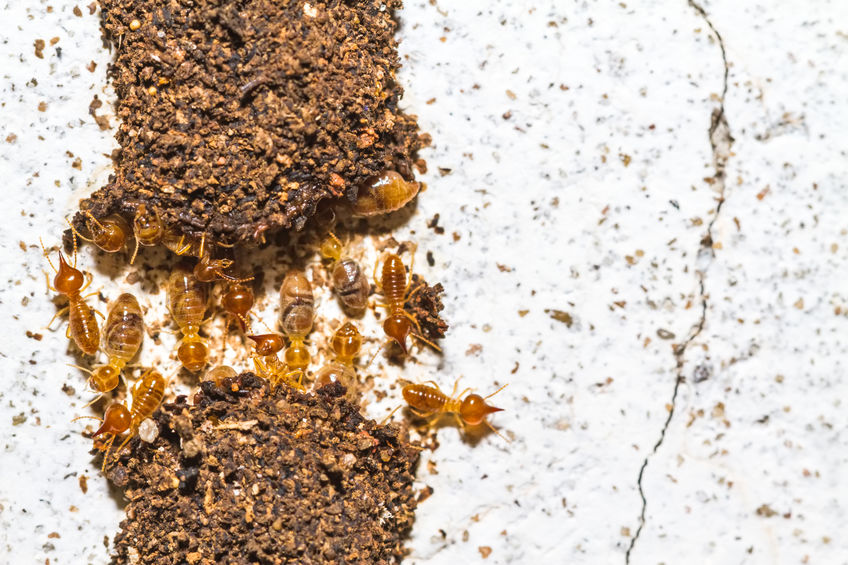The vast majority of termite species on the North American continent and around the world do not invade human settlements. The handful of species that do however are very damaging. In this article, we’re going to cover the termite species that are most likely to start an infestation.
Subterranean termites
Subterranean termites are the most destructive wood boring insect species in the US. These termites build sprawling underground colonies that have hundreds of thousands or even millions of members. When infesting a home, they will deploy thousands of workers at once, and will infest multiple pieces of wood at the same time. They will then consume the wood from the ground up, which means that it can take a long time until the signs of the infestation become visible. In order to control such an infestation, a pro will use either a chemical barrier, a baiting system, or both, to cut off the colony from the home and destroy it.
Drywood termites
Drywood termites hold the second spot when it comes to the damage that they do, with hundreds of millions of dollars being spent each year to deal with these termites and repair the devastation that they leave behind. Unlike subterranean termites, this species will build the colony inside the wood that it consumes, which means that all infestations start with one member, the queen, and then grow slowly over time.
This can greatly lower the amount of damage that drywood termites do to the home, but because they can remain undetected for long periods of times, infestations can get quite extensive. If a small infestation is detected in time, a localized termiticide treatment can be applied, but if an infestation grows too big, then the home will have to be tented and fumigated.
Dampwood termites
Dampwood termites are very similar to their drywood cousins, with the main difference being that they prefer wood that is very high in moisture, while drywood termites go for wood that has low moisture levels. These termites will need to target very moist wood, but once their colony is up and running, they can expand into drier or healthy wood, leading to very costly infestations.
For more information on the various termite species out there and how they are controlled, or if you have a termite infestation, contact us today.

